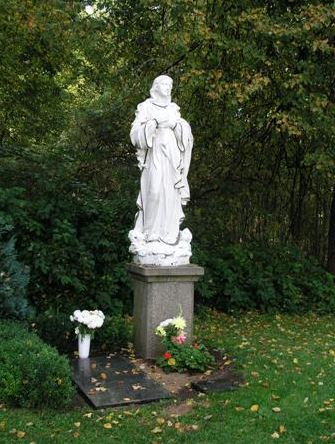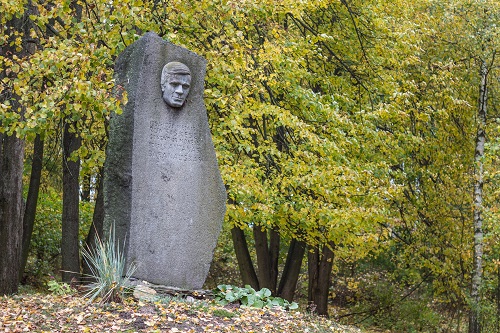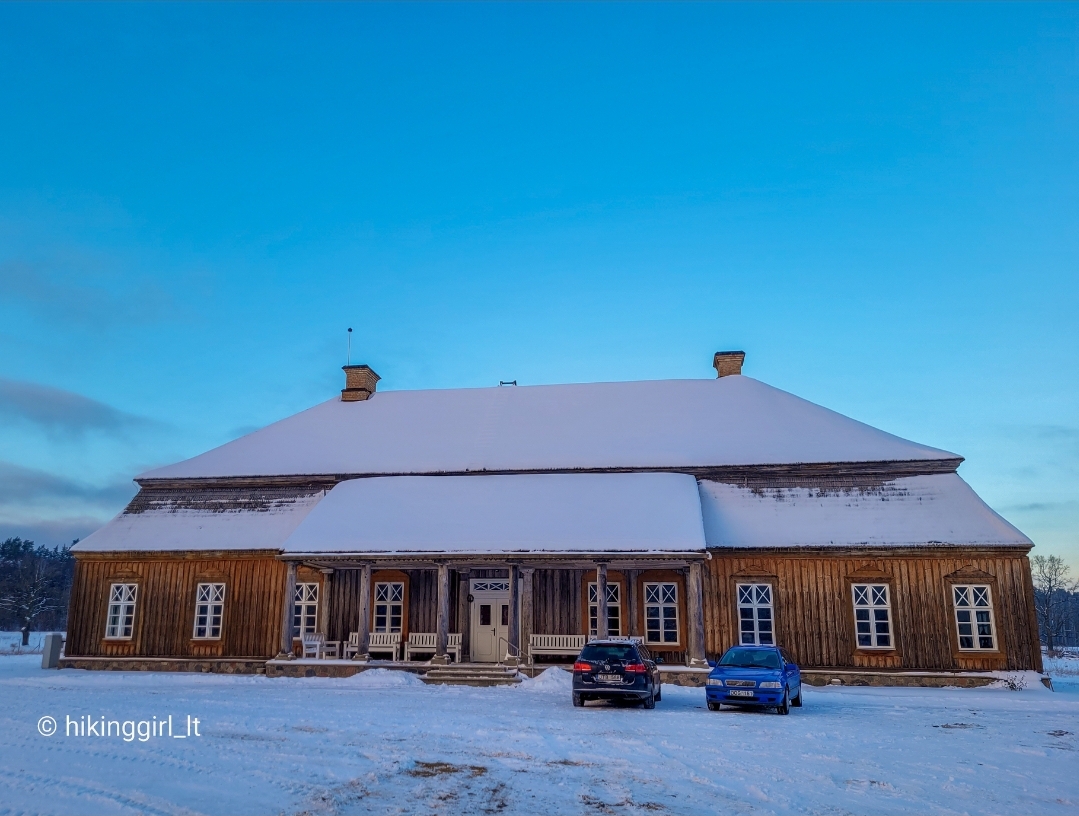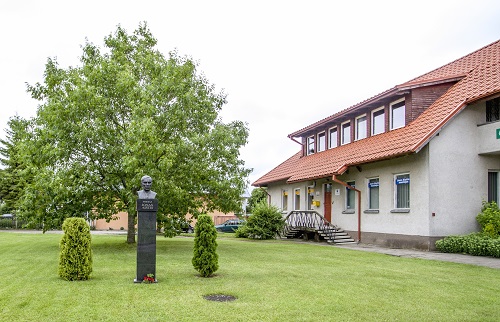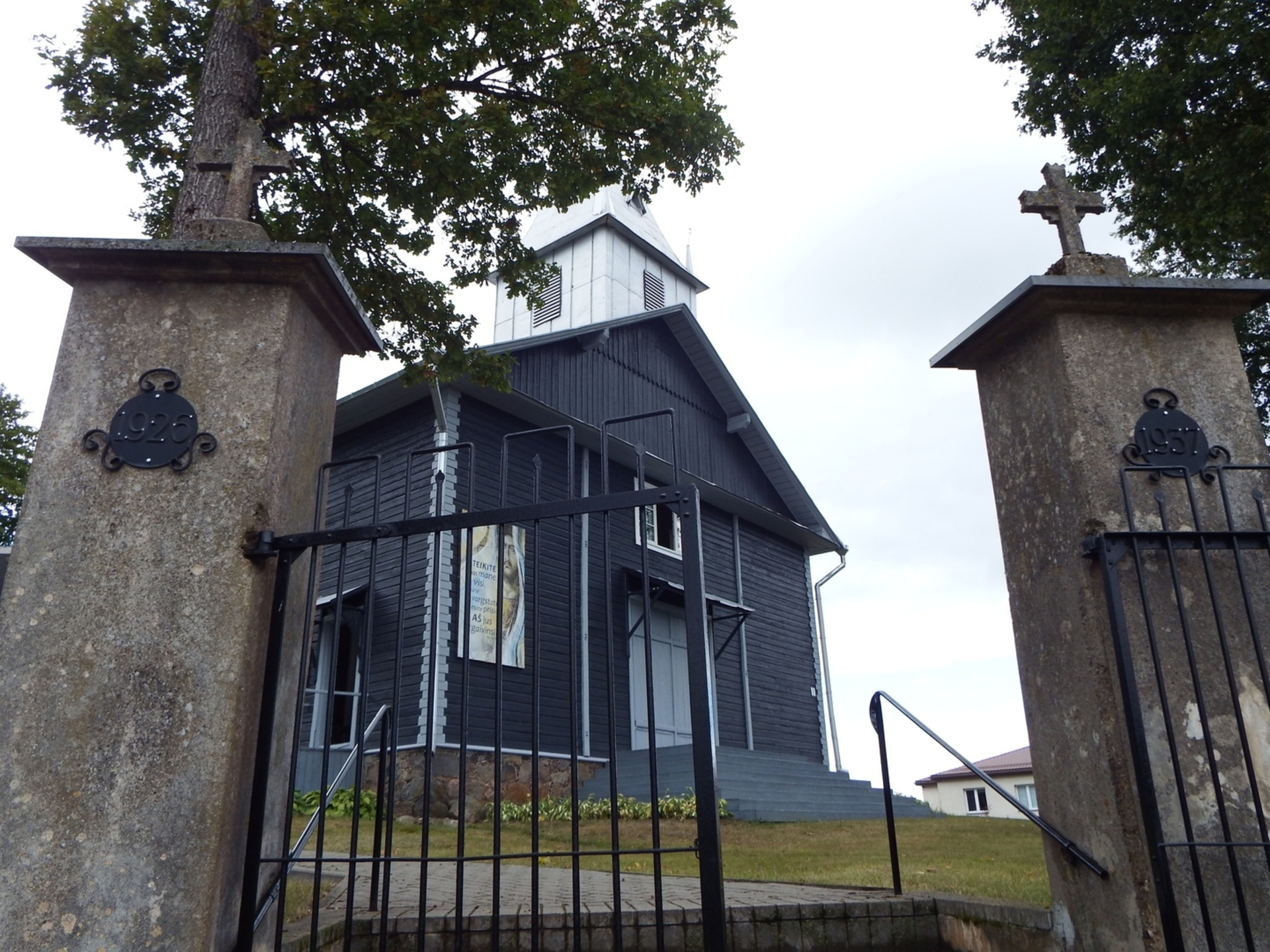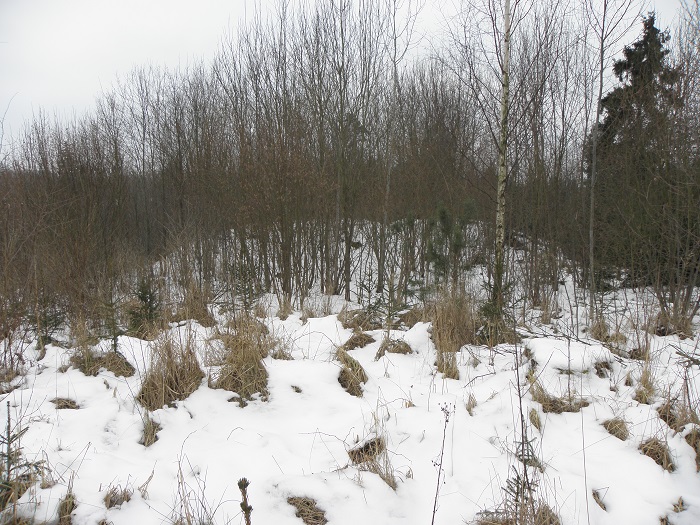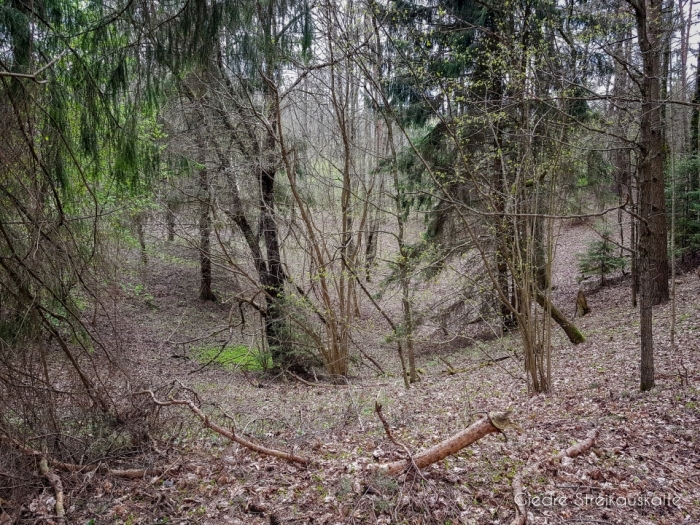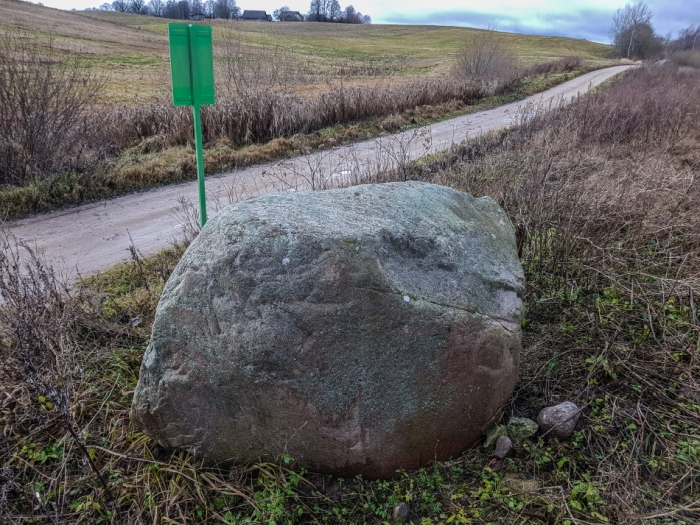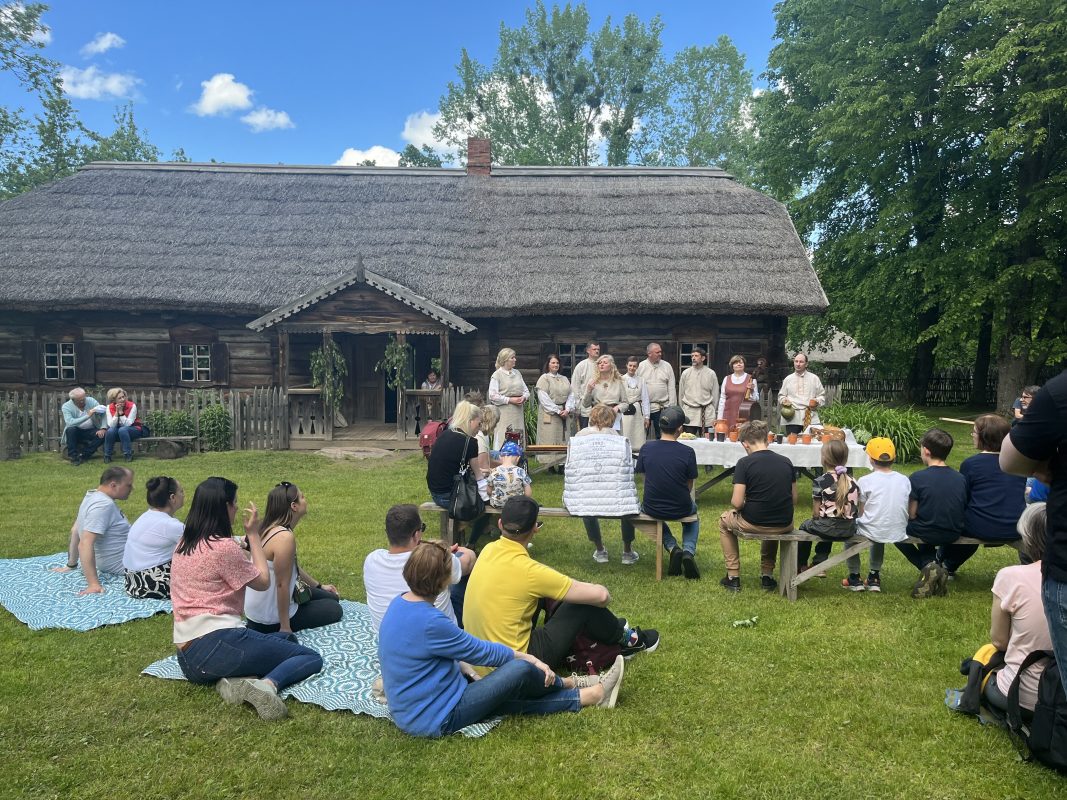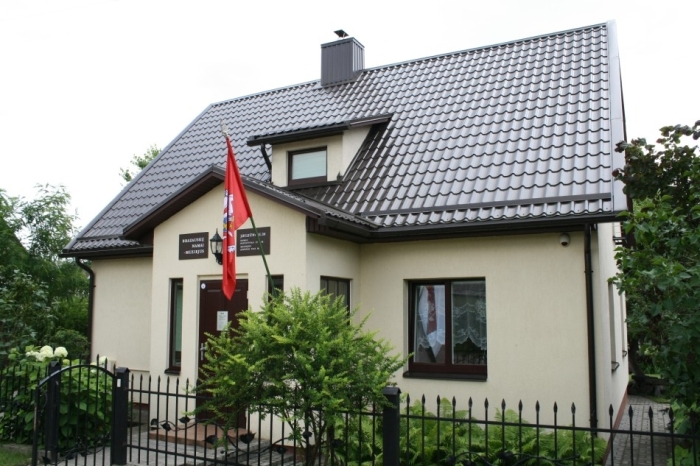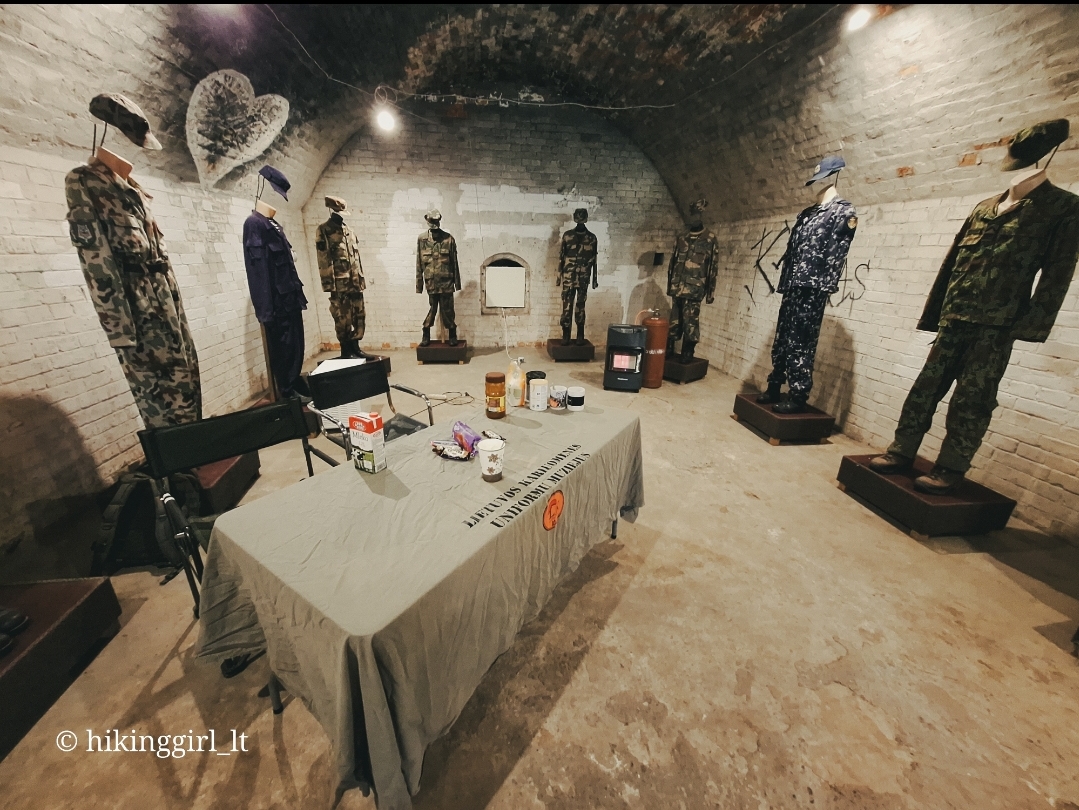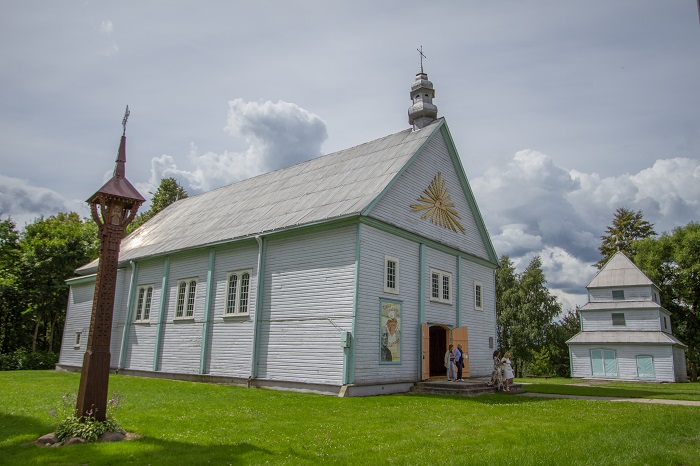The elderly recount a legend about the construction of the first church in Rumšiškės: King Jogaila, along with his wife Queen Jadwiga and a group of clergy, was traveling by sleigh from Vilnius through Rumšiškės to Kaunas. It was early spring, and the king's sleigh broke through the thin ice of a stream, threatening to drown them. Jadwiga vowed that if they were saved, she would build a church at that spot. They managed to escape safely. Following Jadwiga's instructions, local craftsmen built a small wooden church on a hill near the dangerous site. The stream was named "Nadzeja" in Polish, meaning Hope. The first church was likely built in the early 16th century, possibly initiated by Queen Bona. During the 16th and 17th centuries, the church burned down several times. In 1700, the parish priest of Rumšiškės, Samuel Goligont, wrote that he, "unworthy, sinful, and poor priest, built a new church in the town of Rumšiškės with his own funds and efforts, dedicated to St. Michael, the Blessed Virgin Mary, and St. George." By 1710, the founders had donated almost all the necessary furnishings. The new and relatively large church was constructed according to long-established folk architecture traditions that were firmly rooted throughout ethnic Lithuania. The rectangular pine log building was covered with a shingle roof, and a small tower stood in the middle. Similar churches with small roof towers were built in Poland and Belarus. This was one of the most popular types of sacred buildings. In 1849, the Rumšiškės parish was separated from the Vilnius Diocese and joined to the Samogitian Diocese.
In 1859-1860, a new chapter in the history of Rumšiškės
Church began – it underwent major repairs and partial reconstruction. During the 1863 uprising, the administrator of Rumšiškės Church, Father Antanas Kazlauskas, participated in the rebellion; he was later arrested and imprisoned in Vilnius, where he died in 1867. On February 19, 1892, Father Povilas Šilinskis died in Rumšiškės. Although he served for only three years, he introduced Lithuanian hymns in the church and taught the parishioners Lithuanian prayers. In the first half of the 20th century, plans to build a new (brick) church were twice thwarted. The first attempt was halted by the outbreak of World War I; the second (in 1938) was denied because the wooden Rumšiškės Church was recognized as a valuable ancient monument. Consequently, the locals did their best to embellish the existing church. In 1942, the interior was decorated by the artist Vladas Didžiokas, who lived in Dovainonys at that time. In 1958, the bell tower was moved from old Rumšiškės to the new location, followed by the church itself in 1959.
During World War I, the church contained the remains of an unknown 17th-century nobleman, discovered in an iron cage with a precious metal crown. His skull and other bones were tied to metal bars and sealed with wax seals. These remains were later forgotten. They were rediscovered in 1958 when the church was being relocated to the new town site. It is believed that these remains are connected to the 1655-1661 Russian invasion of Vilnius and its surroundings. The nobleman's remains might have been transported from Vilnius and hidden here. These remains and other coffins found under the church were relocated to Rumšiškės cemetery.





 Entertainment
Entertainment
 Food establishments
Food establishments





























 54.859865, 24.201762
54.859865, 24.201762
 Get directions
Get directions








